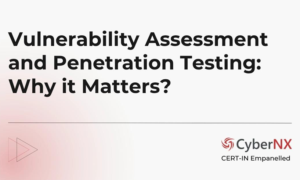Managing IT security effectively is a multifaceted endeavor that requires both strategic foresight and attention to detail. As businesses increasingly rely on digital infrastructure, creating a resilient IT security strategy becomes paramount. This strategy must encompass various components, including risk assessment, threat detection, incident response, and continuous improvement. It also requires an understanding of potential vulnerabilities and the implementation of robust security measures. Moreover, fostering a culture of security awareness among employees plays a critical role in mitigating risks.
The Importance of Risk Assessment
Risk assessment serves as the foundation of any effective security strategy. By identifying potential threats and vulnerabilities, organizations can prioritize their security efforts based on the likelihood and impact of each risk. Conducting regular risk assessments enables businesses to stay ahead of evolving threats and adjust their security postures accordingly. Furthermore, involving stakeholders across various departments ensures a comprehensive understanding of organizational assets and processes. This collaborative approach helps in identifying not only technical vulnerabilities but also human factors that may weaken security. Conversely, neglecting risk assessment can lead to unforeseen vulnerabilities that hackers can exploit. Regular updates to the risk assessment process should incorporate recent threat intelligence reports and incidents from both within and external to the organization.
Threat Detection Technologies
Employing advanced threat detection technologies is critical in safeguarding an organization’s digital assets. These tools enable the identification of suspicious activities in real time, allowing for swift responses to potential breaches. Solutions such as Intrusion Detection Systems (IDS) and Security Information and Event Management (SIEM) play a significant role in threat detection. Implementing an SIEM solution can drastically improve an organization’s ability to monitor and log data across networks. Log analysis tools, specifically, have become increasingly important due to the need for log analysis in understanding security events and anomalies. By continuously analyzing logs, organizations gain insights into user behaviors, unauthorized access attempts, and other critical security events. Regularly updating detection algorithms also ensures that systems can recognize emerging threats and adapt to changing attack patterns.
Incident Response Plans
A well-defined incident response plan is essential for minimizing damage in the event of a cybersecurity breach. This plan outlines specific roles and responsibilities, ensuring that team members understand their tasks during an incident. Clear communication channels reduce confusion and facilitate faster recovery. Furthermore, regular drills and tabletop exercises prepare employees for actual incidents, honing their skills and decision-making abilities. It is advisable to include a diverse team in the planning process so that different perspectives on potential vulnerabilities and responses are considered. Post-incident reviews are another critical component, allowing organizations to analyze the effectiveness of their response and identify areas for improvement. Promptly incorporating lessons learned into the existing strategy fortifies defenses against future incidents.
Employee Training and Awareness
Human error remains one of the leading causes of security breaches, underscoring the importance of employee training and awareness programs. Comprehensive training should educate employees about cybersecurity threats, how to recognize phishing attempts, and the importance of following established protocols. Regular sessions can also help update staff on emerging threats and incorporate best practices into daily processes. An engaged workforce contributes significantly to overall security, as employees serve as the first line of defense. Creating a culture of security fosters an environment where individuals feel responsible for protecting organizational data. Recognition programs can motivate employees to adhere to security practices, rewarding those who proactively identify security threats or contribute to strengthening defenses.
Regular Audits and Compliance
Conducting regular audits is vital to ensuring that an IT security strategy aligns with industry standards and regulations. These audits help identify compliance gaps and areas that require enhancement. Organizations should consult relevant frameworks and regulations, such as the General Data Protection Regulation (GDPR) or the Payment Card Industry Data Security Standard (PCI DSS), as guidelines for their security measures. Employing third-party auditors can provide an objective perspective on the security posture and help identify blind spots. Compliance not only fortifies security practices but also instills trust with clients and partners who expect their data to be protected. The findings from audits can also guide resource allocation, emphasizing areas with the greatest need for investment. Consistent reevaluation of compliance status ensures that security practices evolve along with regulatory changes and business growth.
Continuous Improvement Strategies
A resilient IT security strategy embraces continuous improvement as a fundamental principle. Organizations must remain agile in the face of evolving threats. Regularly evaluating and refining security protocols ensures they address current challenges. Leveraging feedback from incidents, training, and audits facilitates ongoing enhancements to the security framework. Emphasizing the importance of innovation allows organizations to explore new technologies and techniques for improving security. Networking with industry peers and participating in security forums can provide valuable insights and share best practices. Establishing partnerships with cybersecurity firms can offer additional support and resources during times of need. By fostering an environment that values learning and adaptation, businesses can build robust defenses that not only mitigate risks but also cultivate resilience.
Having a resilient IT security strategy is not merely a compliance exercise but a fundamental necessity in today’s digital economy. Organizations that prioritize risk assessment, implement advanced threat detection technologies, and promote employee training will position themselves favorably in the face of increasing threats. By continuously refining practices and seeking external resources, companies can build robust defenses that safeguard their assets and reputation.
































